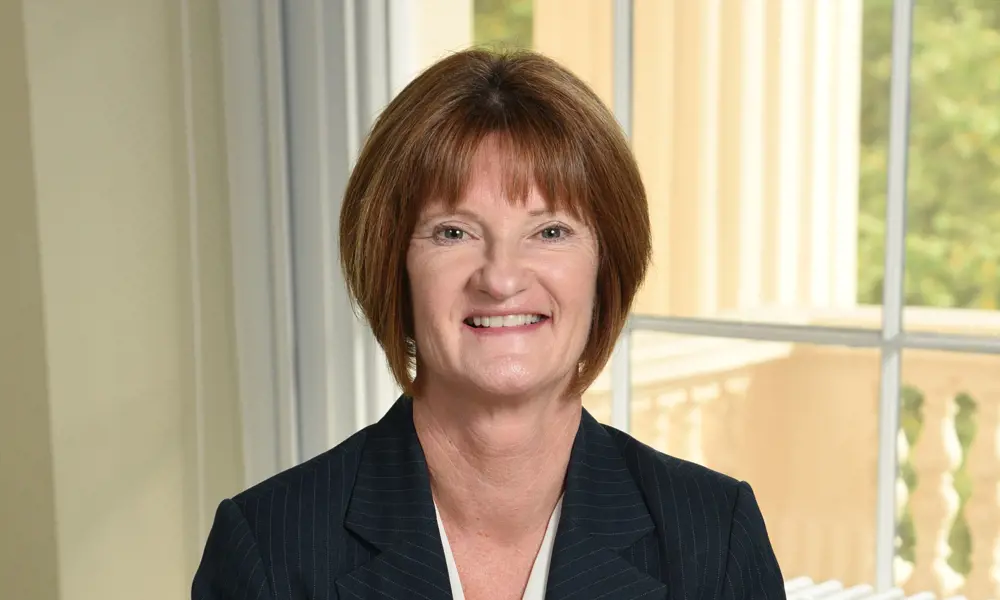
A role model for the next generation
Oversight of marching bands is probably the last task a young engineer starting a career in the Royal Air Force (RAF) would think their job would involve. However, Air Marshal Susan Gray CB OBE FREng took on the role as part of her growing responsibilities as she rose through the ranks. She has recently been promoted to the rank of Air Marshal – making her the most senior female military officer in the Armed Forces and the UK’s first female three-star officer in the process – but, as Air Officer Commanding Number 38 Group, RAF Chief of Staff Support and Chief Engineer for Air Command, Gray managed ‘a one-stop shop’, as she puts it. Along with the RAF’s musicians, she handled ground engineering, logistics, aviation medicine and catering. Whenever the RAF had to set up somewhere, Gray’s team led the way and set up operations before the squadrons could move in and get to work. She will soon take up the role of Director General of the Defence Safety Authority.
Before she took over 38 Group, Gray held a variety of engineering roles, keeping a miscellany of aircraft in the air, along with such tasks as managing media relations and working on a new generation of body armour, helmets and combat clothing for frontline troops.
A people person
A career as an RAF engineer was not Gray’s plan from her early years. There was no family background in the services or in engineering, although she was interested in how things worked. Gray jokes that in the family her father was not technically minded, so it was down to her and her mother to sort out anything in the home of an ‘engineering’ nature.
It was the RAF’s interest in attracting young recruits that set Gray on her career path. Around the time that she was thinking about what to do after school, a friend decided to try to get into the RAF. Determined to avoid falling into a nine to five office job, Gray decided to follow suit. “I said OK, I will see if they will sponsor me to go through university and if I can get through the selection test, which I did, why wouldn’t I?” The air force nudged her in the direction of engineering. “The fact that I ended up doing engineering wasn’t a complete fluke. I did enjoy it, but I was probably better at taking things apart than I was at putting them back together.”
Gray wanted something more than a straightforward technical role, something that involved working with people as well as machines, so rather than signing up to be a technician, she opted to sign on for six years and begin officer training
Gray wanted something more than a straightforward technical role, something that involved working with people as well as machines, so rather than signing up to be a technician, she opted to sign on for six years and begin officer training. A condition for getting an RAF bursary for officer training was that Gray had to study for a degree, so she chose physics and electronics. As she describes it, her decision to do that was “probably purely mercenary”. Then again, she laughs, 33 years later “it was not a bad investment by the RAF”.
People and engineering came together on Gray’s first posting, working on VC10 aircraft. She faced “the challenge of being the only officer awake” when an aircraft made an emergency landing. “Suddenly you are the incident commander, rushing out to an aircraft that is on the runway,” she says. This meant managing a team of engineers and technicians, and was certainly no office job. “You think, ‘this is quite good fun’,” she recalls. “Let alone the fact you actually had a job to do, it was around leading and managing people.”
One thing about an engineer’s life in the RAF is that Gray was constantly on the move, geographically as well as within the RAF, as she moved up the ranks and from posting to posting, with tours in Iraq during the Gulf War and Northern Ireland. After a spell as an Engineering Officer on VC10, and Chinook, Puma and Wessex helicopters, she returned to study at Cranfield University to add a master’s in aerospace vehicle design to her qualifications. By coincidence she was working on her thesis on ‘conceptual design of a fighter aircraft’ at the same time as the RAF was building the Eurofighter, its next generation of aircraft. “It was quite interesting to be able to compare and contrast,” she says.
Varied roles
While keeping aircraft flying has dominated Gray’s engineering career, the diversity of an engineer’s life in the RAF means that there have been other activities. For example, she managed the Combat Clothing Project Team, which looked into body armour and helmets. “We went out to Afghanistan to see how the soldiers were using the equipment and where we thought we could make improvements to it,” she says. “That was the last time I was in a war zone.”
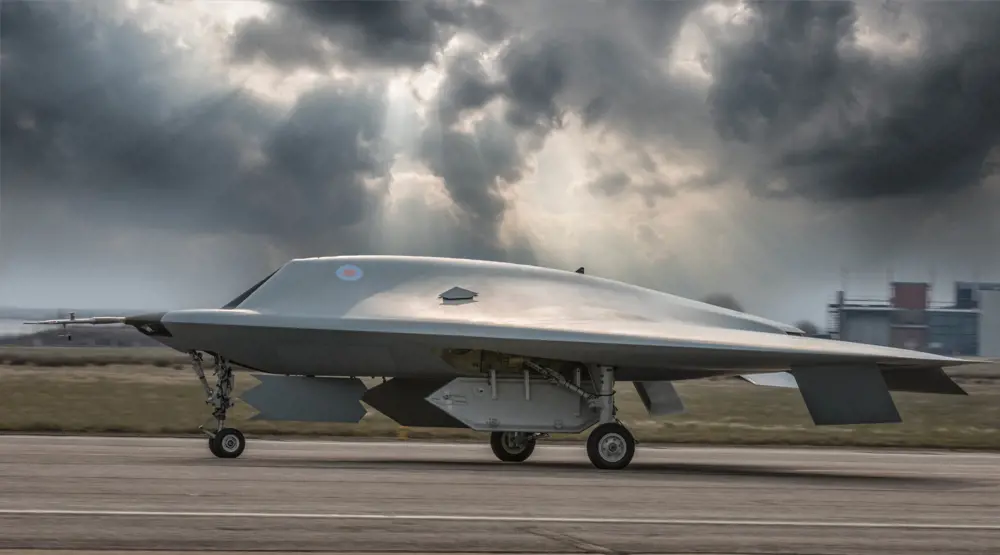
Before the Taranis unmanned combat aerial vehicle could makes its maiden flight in 2013, Gray had to certify it as being ‘fit to fly’ on behalf of the RAF. Working with BAE Systems, she had to check that the technology demonstrator achieved the specified ‘software integrity level’. Gray and her team of systems engineers had to subject the technology to fault-tree analysis © RAF
After that brief excursion, Gray’s next engineering venture was overseeing the department delivering remotely piloted air systems. Her role included signing off the authorisation for the first flight of Taranis, a demonstrator project for a remotely operated ‘stealth’ air vehicle that could avoid radar detection. “We were trying to prove that we can fly it safely,” says Gray. “It was a great technology demonstrator and it worked.” The project partnered with BAE Systems, which is taking the work forward. One of Gray’s roles on Taranis was to certify it as being fit to fly for the first time in Australia. “I was a bit disappointed in not being able to actually be there, but I had to sign the paperwork and then watch other people watch it. Fortunately it all worked well.”
Gray’s time in the RAF has not been all engineering. In one post, “probably my only role where I didn’t actually require any of my engineering skills”, she was Head of Media and Communications at the RAF’s headquarters. “It was illuminating,” she says. One of her achievements in that job, and more generally in the RAF, seems to have been to keep herself out of the media. “I do try quite hard,” she says laughing, “partly for security.”
It certainly would have been hard to remain under the radar given Gray’s role during RAF100, the air force’s centenary celebration. During the year, she gave the prestigious Amy Johnson Named Lecture 2018 at the Royal Aeronautical Society, during which she spoke about women in aviation, paying tribute to the inspiring women that came before her, and reflected on her own 33 years in service – including becoming the first and only woman two-star engineer in the force.
The centenary also weighed heavily on the engineering side of 38 Group, which transported the ground display of aircraft that toured the country with a science, technology, engineering and maths (STEM) roadshow, starting at Horse Guards Parade. This was timed to coincide with the historic flypast over London of 100 aircraft in July 2018. The RAF’s musicians also had plenty to do during the centenary. “I don’t know what we would do without them because they do absolutely maintain morale,” says Gray. “When you see them doing celebration concerts and supporting parades, it is very moving.”

The Red Arrows fly over central London as part of the RAF100 fly past in July 2018 (left), while RAF service personnel celebrate the centenary outside Buckingham Palace © Claire Donovan (left), RAF (right)
Gray had taken over as head of 38 Group around the time that it took on many of the RAF’s ‘behind the scenes’ tasks, such as leading the infrastructure for the whole of the air force. This change was down to the RAF’s pursuit of greater efficiency. “We have centralised the logistics, some of the ground engineering functions and medical support, and the catering support, even the musicians, into 38 Group,” Gray adds. The objective was to get to a position where every group did not have to maintain all of the skills required to fulfil its main role. “We support all the other groups in their activities,” says Gray. “So we are always busy, always in demand.”
At any one time, the 3,000-strong 38 Group could be anywhere. “We were in about 25 different locations around the world at one point,” Gray says. “Whether we were supporting from an operational perspective or from a training perspective, there were lots of exercises. At the drop of the hat, we were required to support tornado or typhoon aircraft wherever they were around the world, or aircraft on hurricane relief operations.”
The RAF is called in to support relief operations because, as Gray says, “we can get there quickly”. For the people in charge of relief activities, the work is back at base in ‘the ops room’, managing service people out in the field. “The last relief operation was in the Caribbean,” explains Gray. “Several of my teams were deployed. Communications engineers went to set up communications. Medics were flying between islands, wherever they needed to be. As the first in, they could set up a headquarters. 38 Group wasn’t running the operation, but without them being there, there wouldn’t have been an operation.” While this was happening, the group also had to support the RAF’s standing tasks in Cyprus and the Falklands. Relief work sits alongside as one of the
At the drop of the hat, we were required to support tornado or typhoon aircraft wherever they were around the world, or aircraft on hurricane relief operations
RAF’s various ‘contingencies’, work that in the past took on mad cow disease and fire service strikes, and more recently has involved Brexit planning. International agreements already cover air movements, Gray explains, so if Brexit does cause disruptions, they are more likely to affect the RAF’s road operations. At 38 Group, Gray ran a squadron of drivers moving articulated lorries to support the RAF’s operations in the Balkans, for example.
After two and half years in charge of 38 Group, Gray now runs the future operating model study. Again, her sense of irony comes in as she recounts how she landed her latest assignment. This may be one of those desk-based jobs that she vowed to avoid, but, with just three months to complete the work, this desk job will not last too long. During an earlier reorganisation, she objected when someone threatened to take away bits of her operation. “I got a bit hot under the collar and basically said ‘you cannot do this in isolation, you need to look across the whole headquarters’.” That observation came back to haunt Gray; towards the end of her posting at 38 Group, the message came back: “Do you remember what you said? Well we would now like you to go and do it.”
Force development
Working out of a small office at RAF High Wycombe, the air force’s main base in the UK, Gray’s task is to put the RAF’s operations and abilities under the microscope. “We quite often review our structures and how we operate, but it is quite significant now because the Ministry of Defence (MoD) is going through a transformation.” This follows Lord Levene’s 2011 independent report into the MoD’s structure and management. “The main premise was that we would move much of the running of each of the services on a day-to-day basis out from London to the main headquarters.” Gray’s current task is to review progress and to ask if the RAF has got the right resources: the right people with the right skills, and the right processes and governance in place to deliver on those tasks.
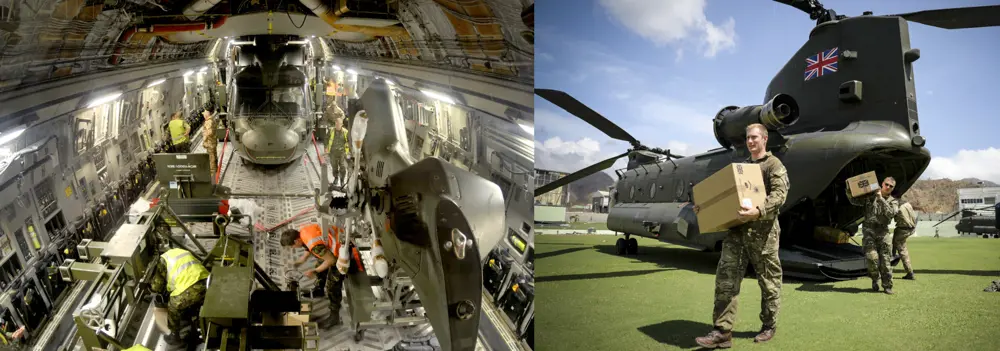
When the UK goes into action to provide humanitarian relief after natural emergencies, the RAF’s speed means that it is often the first to reach distant locations. As head of the RAF’s logistics operations in 38 Group, Gray was in charge at the time of the latest operation, when Hurricane Irma hit the Caribbean, killed over 130 people and left thousands of people without shelter and power, facing hunger and disease. 38 Group loaded helicopters into the back of C17 transport aircraft © RAF
One question she is addressing is the approach to career development, which has put her in a good position to understand how the RAF works. The traditional pattern of two-year postings is a great way of ensuring that officers get to see how the RAF works from all angles. “Throughout our careers as engineers, we have built up our operational experience from being junior engineering officers on squadrons and senior engineering officers, then being the chief engineer on a station, responsible for all the engineering, whether it was aircraft, ground equipment, vehicles or anything,” she says. But is two years long enough? “We have all recognised that you spend the first year trying to find your feet and operating in the second year, but most projects and programmes are longer than two years. It is quite hard to see something through from initiation to completion.”
Along with looking at the way in which the RAF organises itself, as Chief Engineer for Air Command Gray naturally has thoughts on possible changes on the engineering front. “We need to become faster and more agile at developing new technology,” she says. In particular, her view is that, when working with industry, the RAF has to be more innovative and willing to take risks. When it comes to trying new ideas, she wants it to think “it might work, it might not but let’s give it a go. If it doesn’t work then that’s fine, move on. We are starting to become a lot more flexible and responsive in how we develop and procure new technology.”
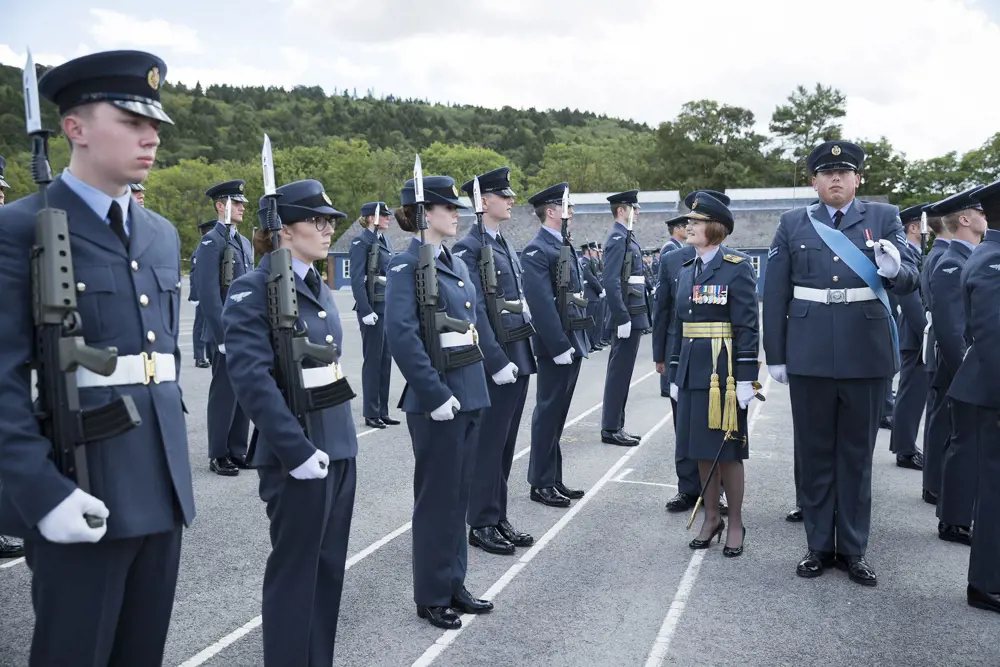
Gray attends the RAF Halton graduation from Phase 1 training. Many of the graduates were young apprentice technicians at the start of their careers in the RAF © RAF
A career for young people
In her previous role as Head of the Engineer Branch and Trades, Gray was responsible, along with two other Air Vice Marshals at High Wycombe, for training and recruiting engineers and technicians into the RAF. They worked together to develop the RAF’s approach to education and recruitment in STEM. “Like most industries, we have struggled to recruit over the last 10 years,” says Gray. Finding engineers is an important task for the RAF: add the air force’s 800 engineers to its 15,000 technicians and you have about half of the RAF’s 31,000 headcount.
RAF100 was a great opportunity to tell the world, especially young people, about the RAF and what it does. “I couldn’t have had a better advertising campaign,” says Gray. “Anybody who doesn’t know what the RAF does must have been overseas for a year.” Gray was especially keen to exploit RAF100 as an opportunity to make the case to young women: “I’m passionate that girls and young women should feel that they can do engineering and maths.” She describes last year as being “pretty transformational”, particularly when it comes to the growing confidence among young women in their ability to do engineering.
The RAF ran a series of school events throughout RAF100. “By the end of the year, all our courses were oversubscribed,” she explains. “Parents are asking us if they can come again next year. We would love to carry on and we will find a mechanism for doing some of it. We have a youth engagement and STEM hub that we are building on the back of RAF100.”
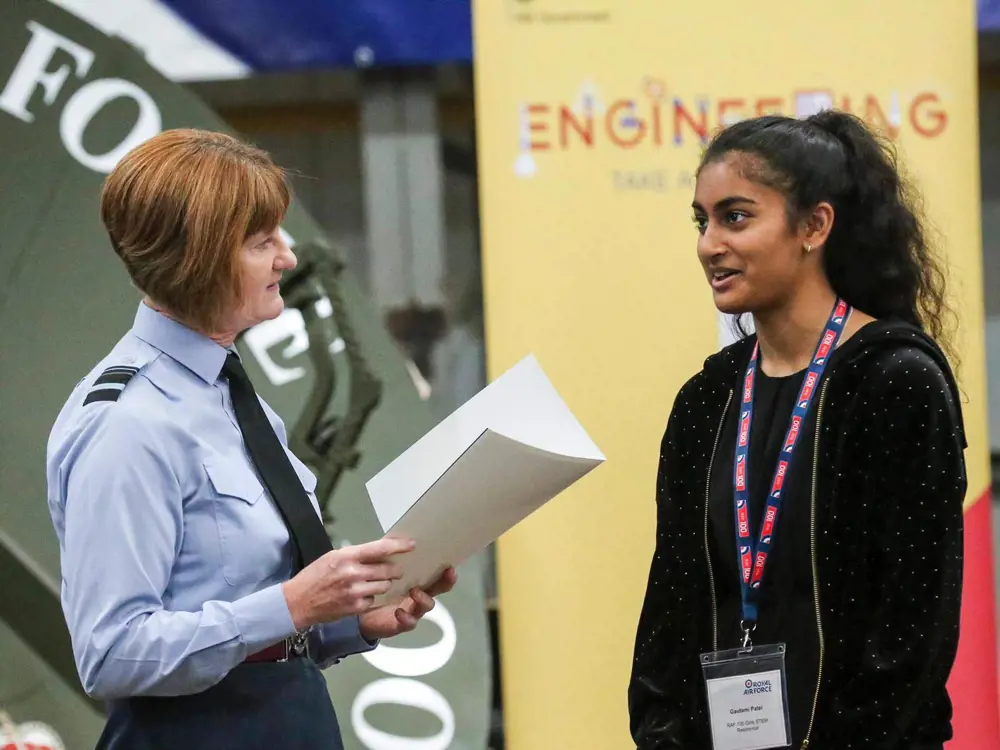
Gray is keen to encourage more young women into a role in engineering © RAF
Gray has also embedded the RAF’s STEM activities in assessing the careers of engineers. One of her roles, she explains, is to write the principles for how the RAF promotes people in the engineering branch, which do not allow engineers to get by with simple box-ticking exercises. “I am looking for people that actively recognise the need to recruit and retain personnel. I want people who are passionate about what they do to pass that passion on. It is not enough for people to write ‘I am a STEM ambassador’ in their annual assessment appraisal,” says Gray, “I need to see what you have done. Those that have actively run courses or done stuff will go further up the pecking order.”
This is not a directive that Gray just wants others to follow. “I have a couple of people who I can say that I have directly recruited, which is quite unusual. You don’t normally get to see the end result.”
Recruitment is one of many changes in how the RAF manages people that Gray has seen since she joined 33 years ago, almost exactly a third of the air force’s existence. It was even the Women’s Royal Air Force when she signed up. That changed soon after she joined, as did the rule that women had to leave when they became pregnant. The rule about leaving when you married had already gone. “All those hurdles have been knocked down now. We actively encourage everyone to stay because of all the experience that they have gained throughout their careers.”
Career timeline and distinctions
Born, 1963. Studied physics and electronics at Newcastle Polytechnic, 1985. Completed a master’s in aerospace vehicle design at Cranfield University, 1994. Appointed Officer of the Order of the British Empire, 2005. Became Air Vice Marshal, 2014. Appointed Air Officer Commanding No. 38 Group, 2016. Appointed Companion of the Order of the Bath, 2017. Fellow of the Royal Academy of Engineering, 2018. Appointed UK’s first female three-star officer,2019.
As well as changing its approach to recruiting and retaining people, Gray has seen big changes in the RAF’s engineering needs. Like many organisations, the air force has become increasingly dependent on information and communications technologies. “We were quite good at reshaping bits of metal,” she says, but it is now much more about systems engineering. “Every aircraft is controlled by a computer really,” she adds. “You can set the computer to do certain things but ultimately if it says ‘no’, you’re not going anywhere.” The RAF’s engineers need training to develop those skills, so many were upskilled in systems and software engineering.
As Gray sees it, for the RAF the next generation is about systems engineering, cyberspace and data, understanding how to use it, and using it securely. “Using data securely is key because we rely upon being one step ahead.” The good news is that Gray is optimistic about the young people who are likely to follow in her footsteps. “Most young people I come across that are interested in being engineers are technically minded, innovative and enthusiastic – a great combination.”
As for her own priorities, Gray says: “I am pretty much focused on the next generation and what we can do from a technical perspective. It is about enthusing the next generation, and giving them the confidence and skills to be able to be innovative; without that there won’t be a future.”
***
This article has been adapted from "A role model for the next generation", which originally appeared in the print edition of Ingenia 78 (March 2019).
Keep up-to-date with Ingenia for free
SubscribeOther content from Ingenia
Quick read

- Environment & sustainability
- Opinion
A young engineer’s perspective on the good, the bad and the ugly of COP27

- Environment & sustainability
- Issue 95
How do we pay for net zero technologies?
Quick read

- Transport
- Mechanical
- How I got here
Electrifying trains and STEMAZING outreach

- Civil & structural
- Environment & sustainability
- Issue 95